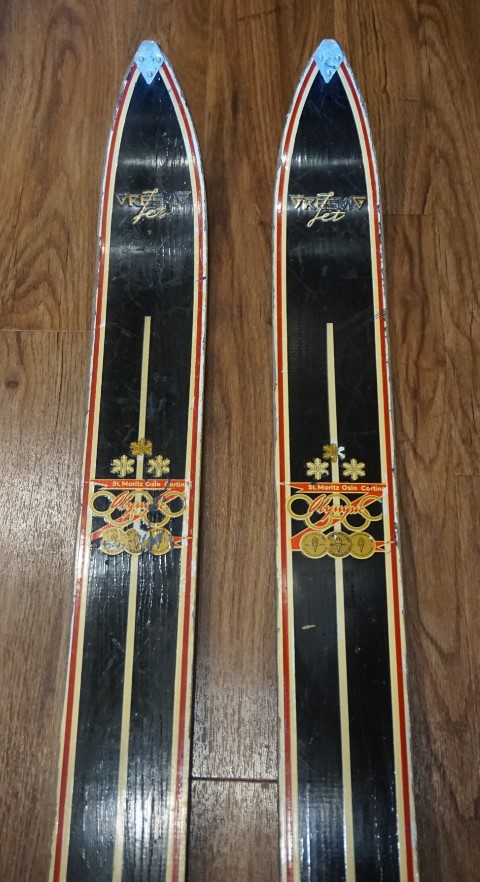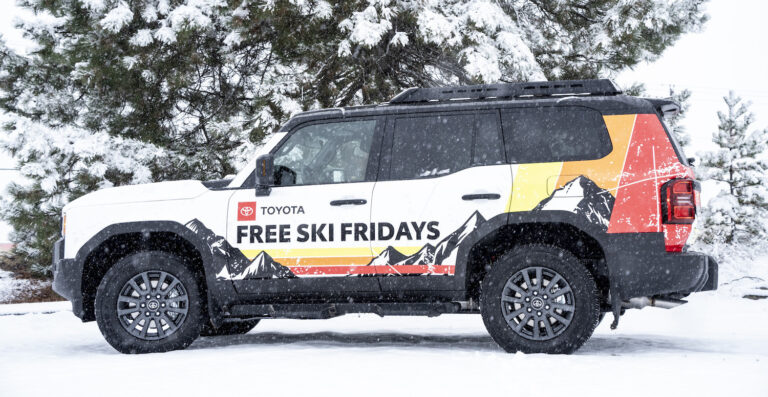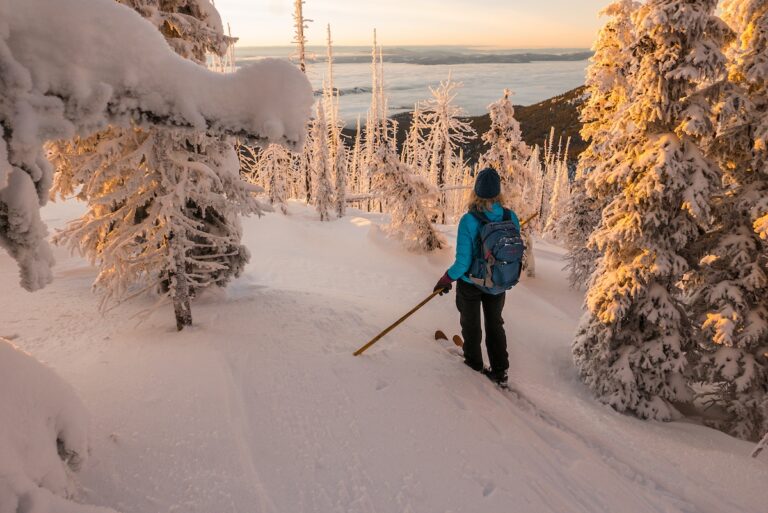The first time I saw my first pair of downhill skis, I was at my aunt and uncle’s house in Tacoma, probably on Thanksgiving of 1967 or 1968. There were several pairs of skis laying upside down on a wooden sawhorse, each of which was intended for me and my siblings. One of my older cousins was painting the bases with pine tar or something similar, sealing the wood and providing a base for the wax.
I was destined for the Gresvig Jets. They were the sort of skis that us experienced skiers remember fondly, at least when our memory is dulled by nostalgia or creeping senility. I would never want to ski on them again, except to show the “kids these days,” kids like my son who didn’t have the fortune to share our trail blazing experiences, just how tough we were.
Manufactured in Yugoslavia, the tops were black with gold lettering, not quite so reminiscent of their Norwegian heritage as are the accompanying pictures. Absent the red and white trim and badging, there was just the brand and model name, Gresvig Jet, plus scratches and splintering gouges along the upper edges. Each tip and tail had a steel end piece to prevent delamination.
Back then, longer skis were better skis, even when they weren’t. During my elementary years I was always the second tallest in class, which destined me for the longest pair, the Gresvigs. My cousin held them on end as I reached my wrist to the tip, confirming my destiny. I likely came up short, but like almost everything, it was expected I would grow into them. They measured 185 centimeters, one centimeter longer than the boards I ski on today.

The spring-loaded cable bindings worked something like a ski boot buckle. The cable, once set, pushed the boot into a toe piece designed to release as a so-called “safety binding.” They were anything but. I don’t know if DIN standards for bindings existed then. If they did, when it came to body parts, lower legs in particular, it likely stood for Destroy It Now. Rather than brakes, a leather strap wrapped around each cable and ankle.
Along with painted-on bases, the edges were thin strips of steel screwed into the base, often rusty after a day on the slopes. They provided something of an edging capability. Not that I, not being Stein Ericson, could carve a turn with such a ski. I was happy enough to skid a stem christie. (For younger readers, the “stem christie” is what you learned as going from pizza slice to French fry.)
I’d thought of these skis over the years and then, while rummaging through a consignment shop in Sandpoint, I came across a pair. Finding them rekindled a nostalgic sense of my childhood skiing. I remembered not so much the rope tow flinging me earthward as I tried to get a grip, but instead, a perfect turn I made, euphorically sweeping both tails downhill together toward my aunt Dorothy, a perfect parallel christie, coming to a snow spraying stop just feet from her. I knew that’s how skiing was supposed to be and feel, and while those skis were so often a struggle, that one turn on those Jets hooked me for life.
Originally published as “Those Were the Days” in the On the Mountain section of the November-December 2020 issue.
Bradley Bleck shared his memories of Priest Lake for the July/August Out There. When not teaching English classes at Spokane Falls, he’s enjoying life in Spokane with his family, riding his bike indoors and out, and hoping to be ski fit by the time the snow flies.













